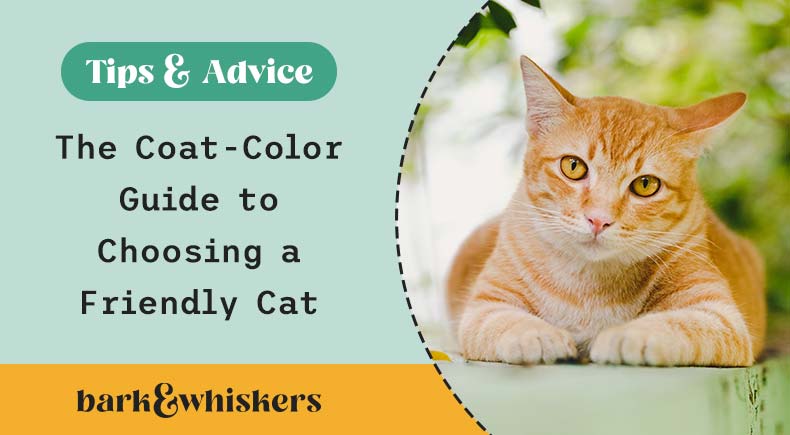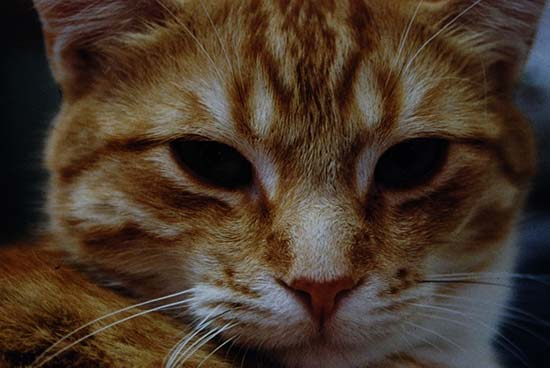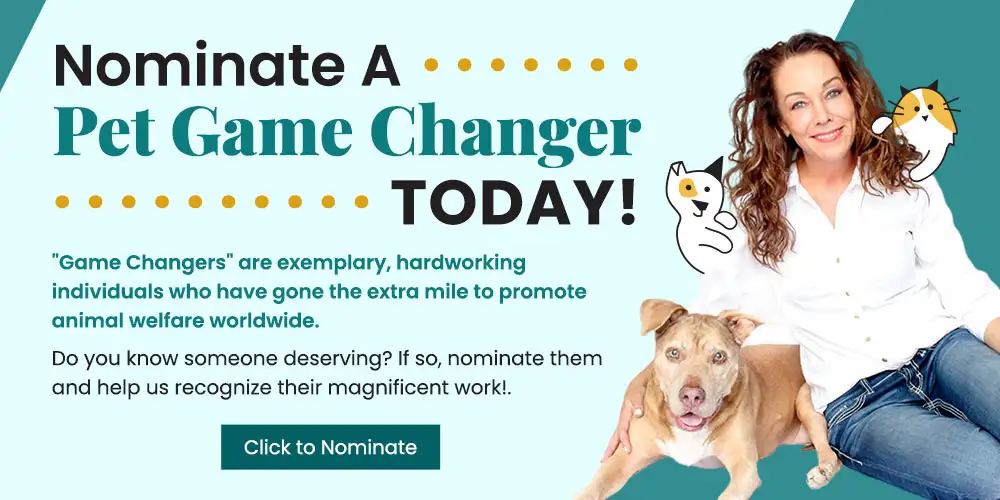The Coat-Color Guide to Choosing a Friendly Cat
Can you predict the friendliness of a cat based on her coat color? This online survey of cat owners suggests yes, at least for this color of cat. I, too, have found these cats to be extra special.

STORY AT-A-GLANCE
- Orange (aka ginger) cats are known to be outgoing and friendly, and their distinct personalities may be linked to their coat color
- Of course, most orange cats are male and male cats often have different personalities than females, so it might explain the sociable behavior of many orange kitties
- There may also be other genetic differences that result in the dominance and boldness of orange cats, males in particular
If you have a feline family member who happens to have an orange-ish colored coat, or you’ve ever spent time around a “ginger” cat, you might have sensed there’s something special about them. This is not to say there isn’t something special about kitty companions in general, regardless of coat color. Each is special in his or her own way.
But orange cats often have stand-out personalities and behaviors, and science may be closing in on an explanation for this widely held belief.
One example: the results of an online survey of cat owners published in 2015 showed that respondents were more likely to describe orange cats as friendly.1 And while this finding could be attributed to confirmation bias on the part of fans of orange cats, there could also be a genetic component in play.
The gene responsible for feline coat colors is linked to gender, which in the case of orange cats results in many more males than females. It’s generally thought (though not well-researched) that male cats tend to be slightly more social than females. (I realize this is a hotly debated topic with strong opinions on all sides, but it’s covered in the literature, nonetheless.)
This could in part explain not only the sociability of orange cats, but also the noted cheekiness (“tortitude”) of tortoiseshell cats, who are primarily female2 (and which I also own and love).
Why Orange Cats May Be Different From Other Cats
A study published in 1995 examined the “orange gene” in cats and found they may differ from other cats in even more ways.3 The research spanned a 10-year period from 1982 to 1992 and involved 30 cat populations in France. Data was collected on from 56 to 491 cats in each population.
According to Karen Wu Ph.D., writing for Psychology Today, the researchers uncovered a few interesting trends with regard to orange cats:4
- Orange cats are more common in rural areas, which are less populous than urban areas, suggesting that "orange cats may enjoy greater reproductive success in particular social conditions."
- Orange cats are less common in areas with greater mortality risk, suggesting that "orange cats may be more likely to engage in risky behaviors that result in death."
- Orange cats show greater sexual dimorphism (differences between genders), in that orange males weigh more than cats of other colors, and orange females weigh less than cats of other colors.5
"In rural environments," explains Wu, "the mating system of cats is more polygynous, meaning that while male cats tend to mate with multiple female cats, females tend to mate with only one male. Meanwhile, in urban environments, both female and male cats have multiple mates."
The authors of the study theorize that due to their physical and behavioral differences, orange cats — especially males — may employ a different reproductive strategy than other cats.
“Specifically, since they are larger in size (and likely more aggressive given previously documented links between a male cat's body size and aggression towards other cats),6 orange male cats may enjoy greater social status and thus reproductive success in rural locations where females typically only mate with one male,” writes Wu.
“However, in urban environments, their social status may not get them as far. In these dense environments, female cats tend to mate with many male cats. As a result, reproductive success is dependent on sperm competition rather than physical competition between male cats.
Therefore, in an urban environment, the competitive nature of orange male cats may heighten their risk of death (e.g., through fights with cats or other animals), thus driving down the proportions of orange cats. This idea is supported by past findings that larger male cats are more dominant and aggressive, resulting in both greater reproductive success and greater mortality risk.”7
Orange Cats I Have Known
The first time I heard about “magic orange cats” was in 1999 from my animal chiropractor, Dr. Sig Hansen. Dr. Hansen came to my animal hospital one day a week to see patients. I had recently put Gemini, my heart dog, to sleep. I had started grief counseling, but I was really struggling at work.
I was having a hard time managing my sorrow and being a full-time, very busy vet. I spent many months pulling myself together in a back room of my clinic in between appointments.
This was when Dr. Hansen suggested I adopt an orange cat. Initially, was I completely annoyed by his suggestion, because I felt that getting an orange cat would not ease the pain of losing the magnificent Rottweiler that taught me my most valuable life lessons. It was almost offensive.
But shortly thereafter I got a call from the humane society where I was a volunteer board member. There was a stray orange cat that had been there long enough, his time was up, and they wanted me to meet him. Reluctantly, I decided to just go and say hello. I brought my mom along, who I knew would be painfully honest about all that she saw.
I opened his kennel door. He was easy going and immediately came over to greet me, purring quite loudly. I explained to him that his time was up, and that I was willing to foster him until I could find him a suitable home, but that I had a house full of cageless, free-flying parrots.
They ran the house and he would not be permitted to look lustfully, even once, at any of them, or I would immediately rehome him. He would have to abide by my house rules and be completely respectful of all of the prey species he was about to cohabit with. My mom said, “I think he will be perfect.”
I brought him home in a cardboard carrier, which I opened in the sunroom where my parrots all hung out on large tree branches. I introduced him to each bird, and again explained the rules: even one brief sideways glance and he would be rehomed immediately. He never entered that room again and followed the house rules to a tee.
It was like he knew exactly what I needed, and he knew exactly what he could provide to me: a unique and very special friendship to help my heart heal from the profound loss I had experienced. Dr. Hansen was absolutely right: what I needed was a magical orange cat. And Jerry was magical.

The second orange cat I fell in love with was Manuka (yes, after the honey). When I think back to all the magic orange cats I’ve met in practice over the years, not a single one was ever aggressive or feisty. They are, indeed, very special.
Are Risk-Taking Cats Friendlier to Humans?
As strange as it may seem, the coat color-behavior connection in cats is also seen in other animals, including birds and rodents. It appears that genes that influence behavior and certain physical attributes may be inherited together with genes responsible for coat color. And while the 1995 study authors don’t hypothesize about the reasons behind orange cat friendliness toward humans, it’s possibly the result of the risk-taking behaviors these cats exhibit.
“Perhaps orange male cats, due to their dominant status and bold personalities, feel more comfortable with approaching humans, who often frighten timid cats,” Wu writes. “Future studies can investigate whether this might be the case.”
Sources and References
- 1 Delgado, M.M. et al (2012) Human Perceptions of Coat Color as an Indicator of Domestic Cat Personality, Anthrozoös, 25:4, 427-440
- 2 Stelow, E.A. et al. Journal of Applied Animal Welfare Science, Volume 19, Issue 1, 2016
- 3 Pontier, D. et al. Oikos Vol. 73, No. 3 (Sep., 1995), pp. 299-308
- 4 Psychology Today, September 27, 2020
- 5 Jones, E. et al. Australian Journal of Zoology 32(2) 231 - 237 Published: 1984
- 6, 7 Natoli, E. et al. Male Reproductive Success in a Social Group of Urban Feral Cats (Felis catus L.). Ethology, 16 February 2007
Today's Pet Video:
Stray Dog With a Jar Stuck on Its Head Finds a Family
Experts estimated this poor stray dog had a plastic jar stuck on her head for several weeks. Unable to eat or drink until help arrived, that “help” became her new family.










